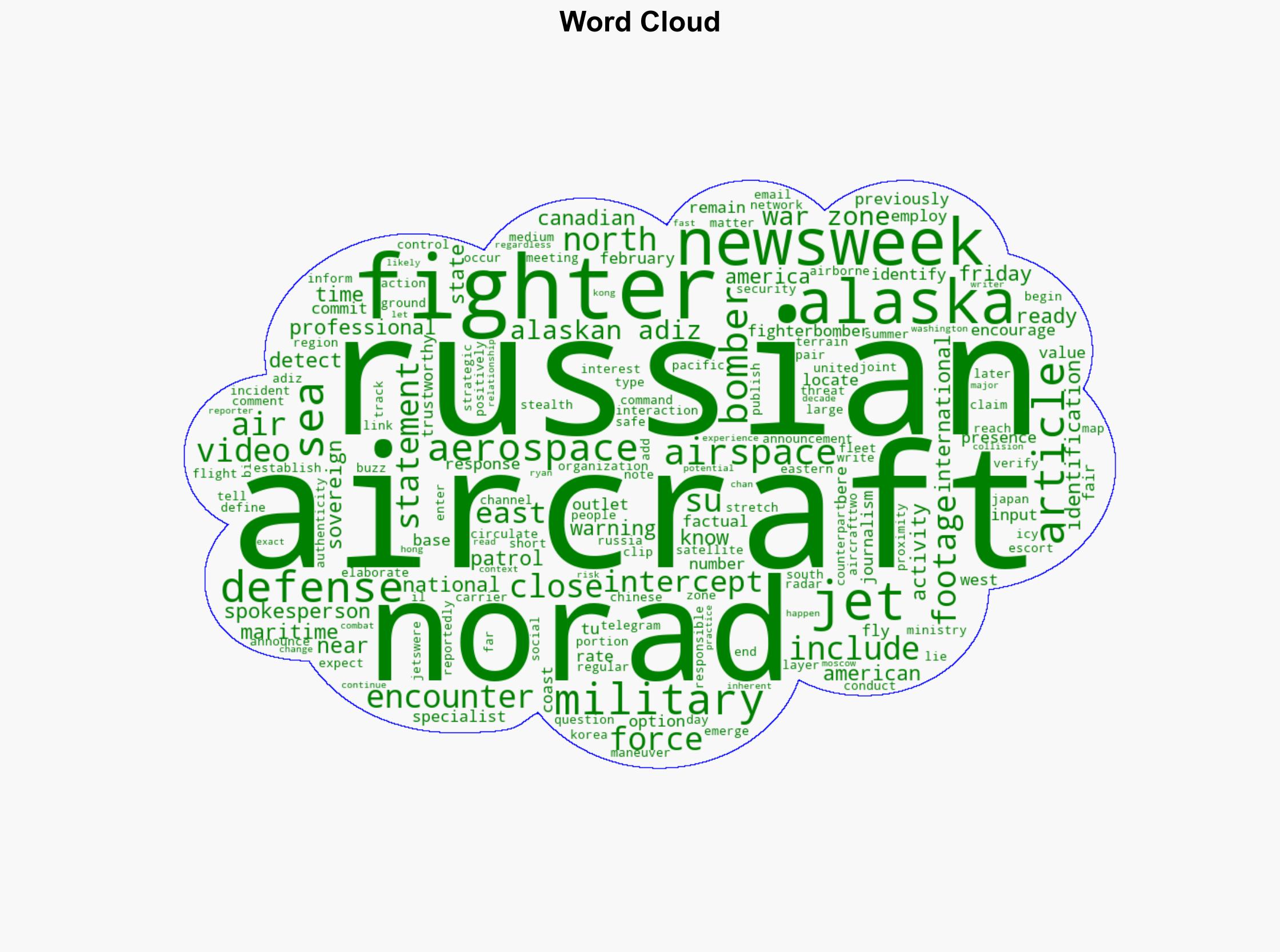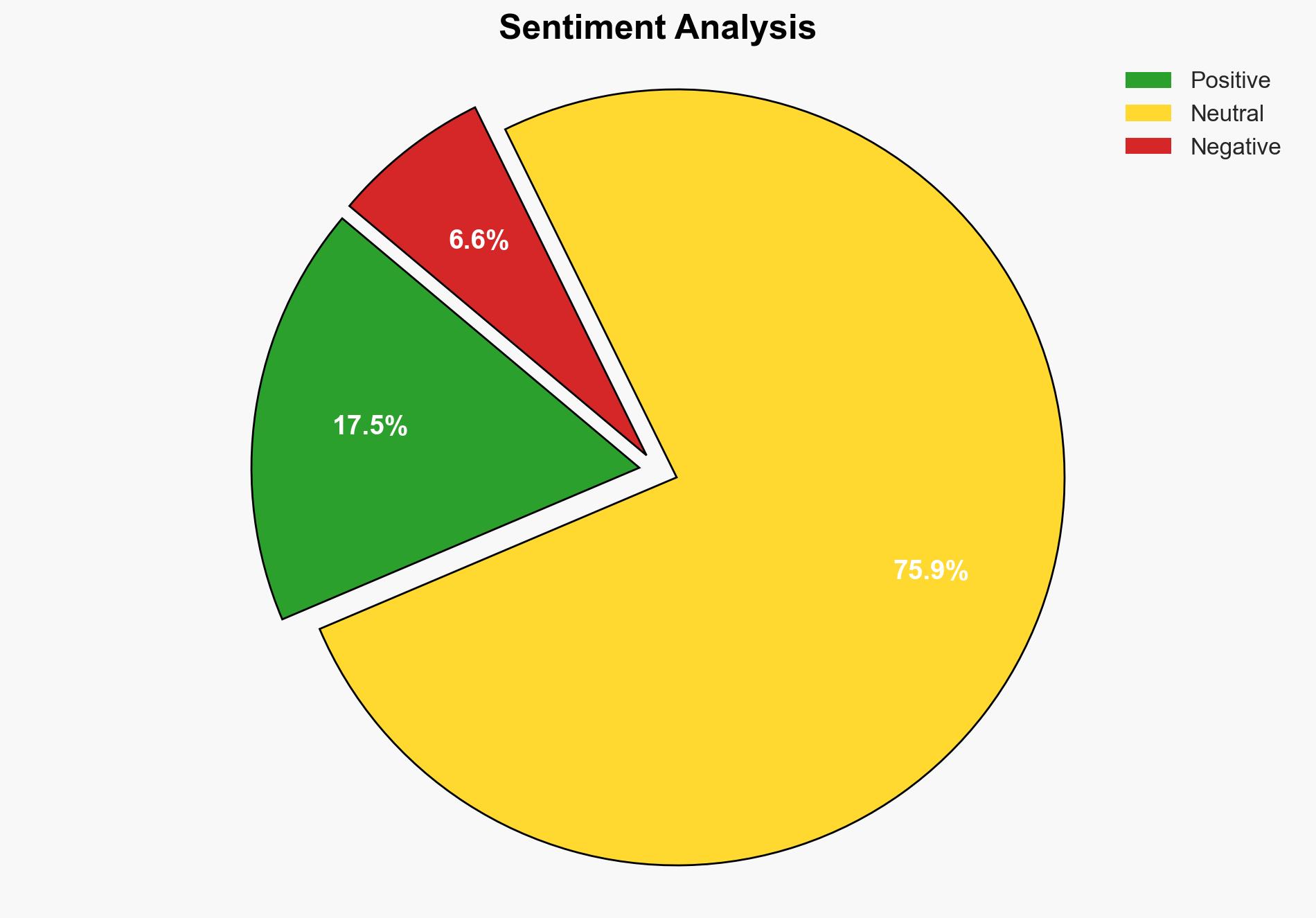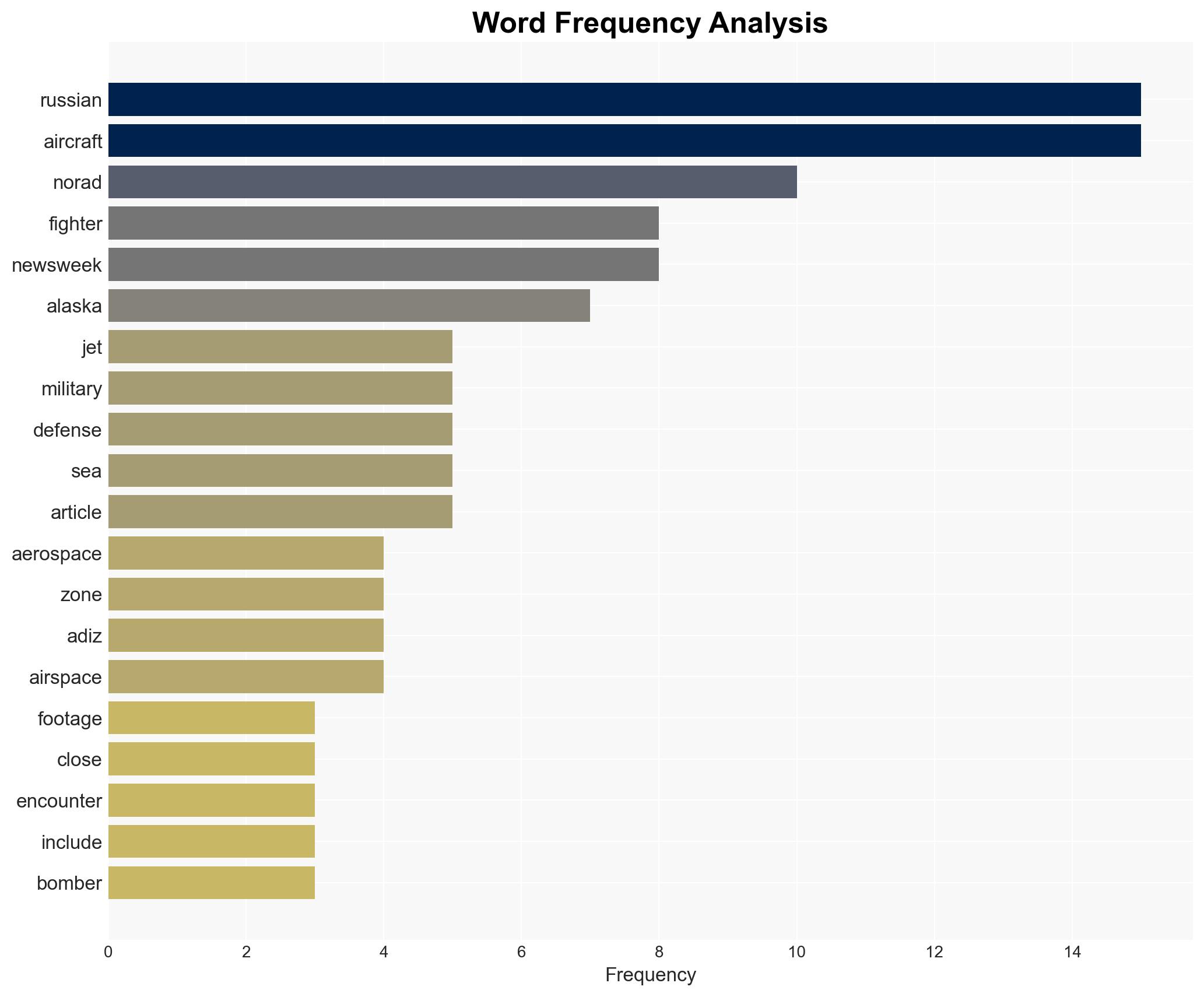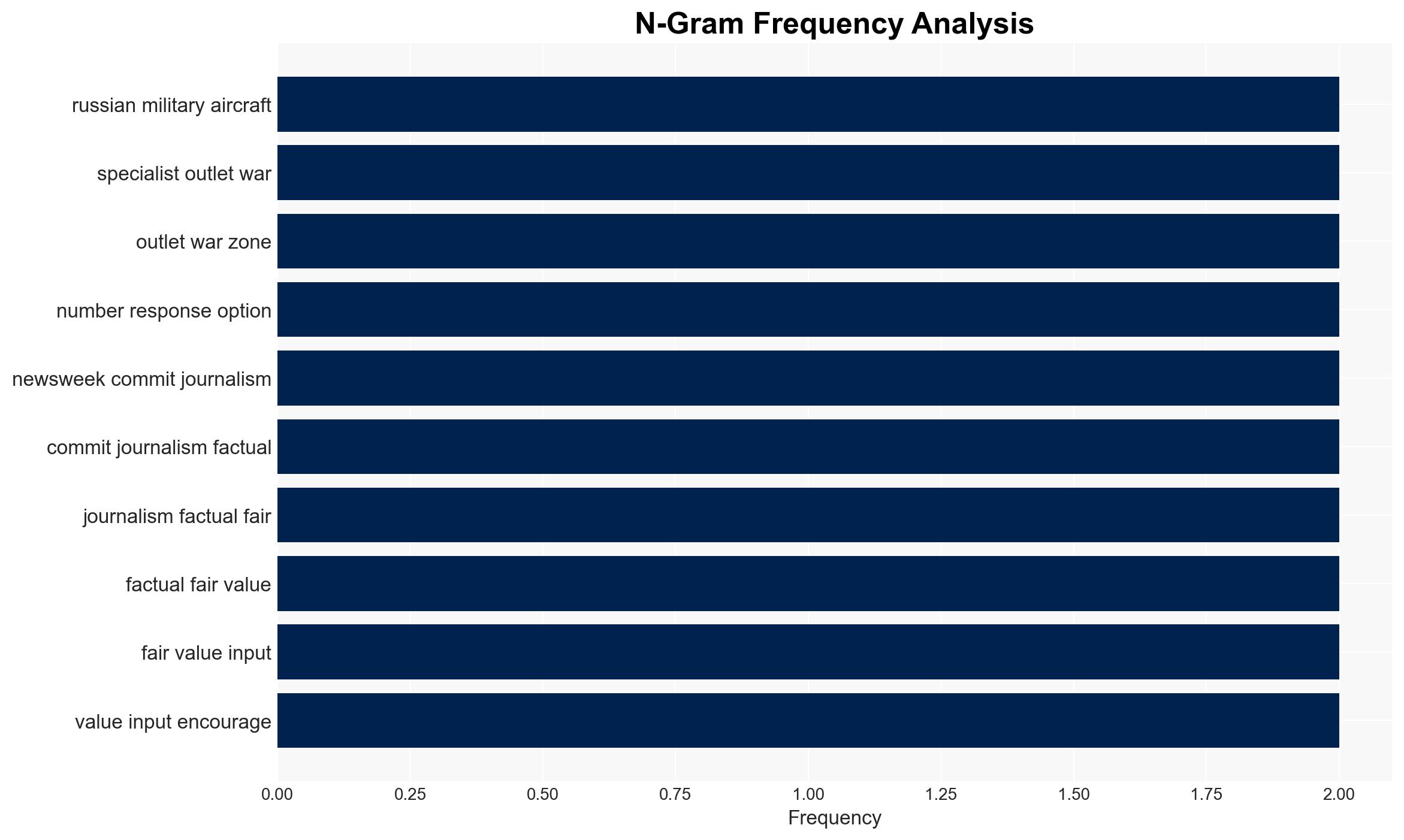Russian Bomber Intercepted by F-35 Jet off US CoastVideo – Newsweek
Published on: 2025-04-07
Intelligence Report: Russian Bomber Intercepted by F-35 Jet off US CoastVideo – Newsweek
1. BLUF (Bottom Line Up Front)
A Russian bomber was intercepted by an F-35 jet near Alaska, highlighting ongoing tensions and the strategic importance of the region. The incident underscores the necessity for vigilance and readiness in monitoring airspace activities. It is crucial for stakeholders to enhance surveillance capabilities and maintain robust defense protocols to address potential threats.
2. Detailed Analysis
The following structured analytic techniques have been applied for this analysis:
General Analysis
The incident involved a close encounter between a United States stealth fighter jet and Russian military aircraft, including a bomber, near Alaska. The North American Aerospace Defense Command (NORAD) confirmed the interception, which occurred within the Alaskan Air Defense Identification Zone (ADIZ). The Russian aircraft remained in international airspace, not entering American or Canadian sovereign airspace. This event is part of a pattern of regular Russian military activity in the region, posing inherent risks such as potential collisions.
3. Implications and Strategic Risks
The interception highlights several strategic risks, including:
- National Security: Continuous Russian military presence near Alaska poses a potential threat to national security, requiring constant monitoring and readiness.
- Regional Stability: Such encounters can escalate tensions, affecting regional stability and diplomatic relations between the involved nations.
- Economic Interests: The proximity of military activities to critical trade routes and economic zones could disrupt commercial operations and impact economic interests.
4. Recommendations and Outlook
Recommendations:
- Enhance surveillance and reconnaissance capabilities to improve early detection and response times.
- Strengthen diplomatic channels to address and de-escalate potential conflicts arising from such encounters.
- Invest in advanced technological solutions to bolster air defense systems and ensure robust protection of national airspace.
Outlook:
Best-case scenario: Increased diplomatic engagement leads to a reduction in military encounters, enhancing regional stability.
Worst-case scenario: Escalation of military activities results in heightened tensions and potential conflict.
Most likely outcome: Continued monitoring and strategic readiness maintain a status quo, with periodic encounters managed through established protocols.
5. Key Individuals and Entities
The report mentions significant individuals and organizations, including Ryan Chan and NORAD. These entities play critical roles in reporting and managing the incident, respectively.




